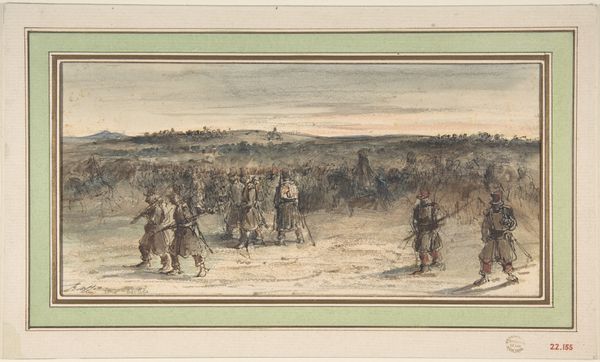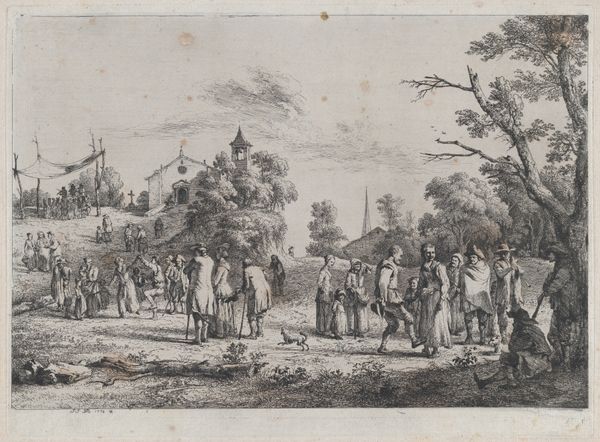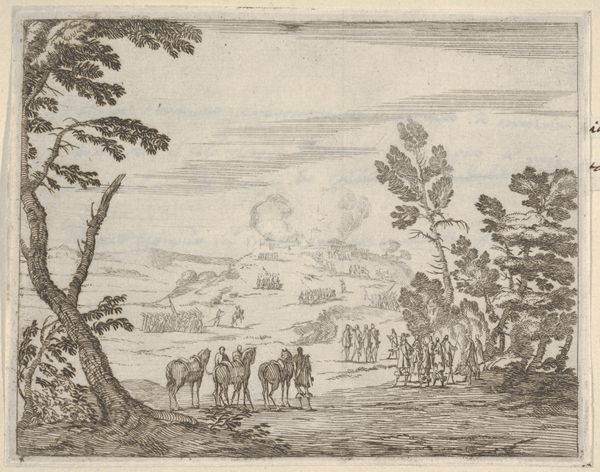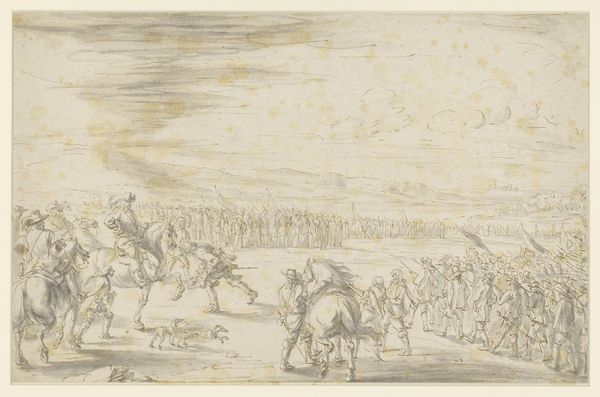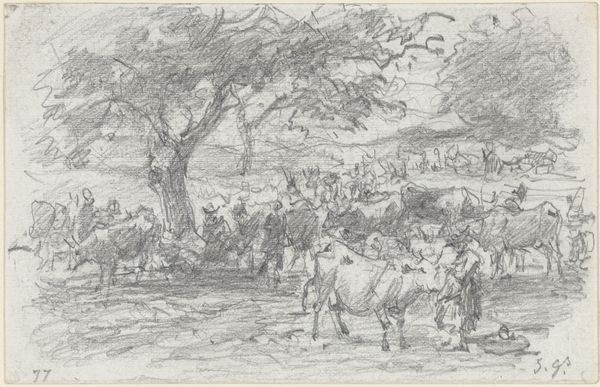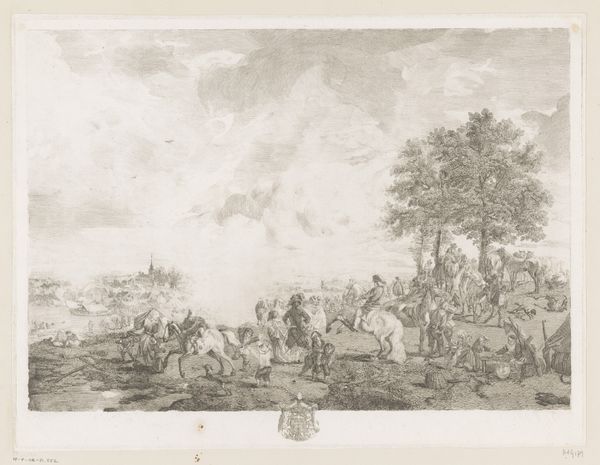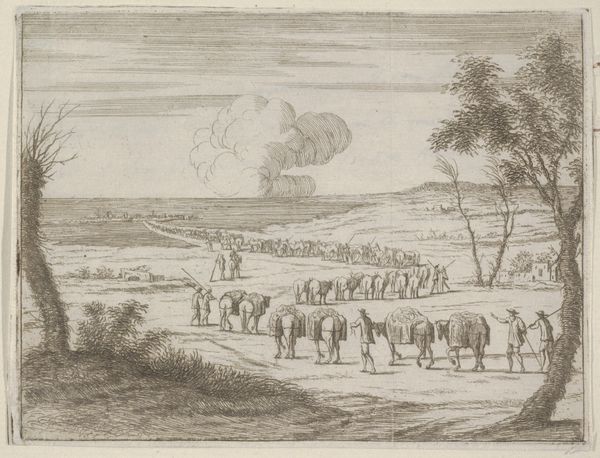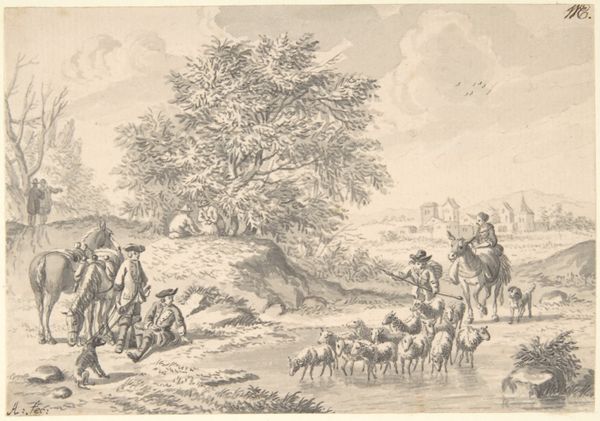
drawing, ink
#
drawing
#
dutch-golden-age
#
landscape
#
ink
#
genre-painting
Dimensions: height 199 mm, width 316 mm
Copyright: Rijks Museum: Open Domain
Curator: Look at the open space in this ink drawing by Jan Wildens, titled "Landscape with Falconers and Herdsman". What's your first take? Editor: The color palette, or rather, the lack thereof, creates a somber atmosphere. Despite the scene depicting people and animals in an open field, it almost feels confined and quiet, perhaps hinting at the daily struggle of people at the time. Curator: Wildens painted this scene during the Dutch Golden Age, a period defined by the rise of secular landscape art. These pieces became significant expressions of national identity. It portrays an imagined Flemish landscape that highlights a burgeoning mercantile class engaging in leisure activities such as falconry. Editor: I notice that despite being labeled as 'leisure,' the activity is rooted in a social hierarchy and access to resources, evidenced by those engaging in it as opposed to the many in the background moving sheep along the path. It prompts us to consider not just national identity, but also the disparities within society that the art might subtly, or not so subtly, reflect. Curator: Absolutely. Consider the cultural and economic transformations occurring then. Falconry, a sport of the elite, finds itself set against a backdrop of more agrarian work. Wildens masterfully integrates social layers. It highlights a very specific class identity through both leisure activities and implied economic standing. Editor: It makes you think about the choices, conscious or otherwise, artists make and how those decisions can perpetuate or question the accepted norms. How the visual representation of leisurely pastimes juxtaposed against working landscapes might implicitly comment on societal equity and wealth distribution. It is like he is saying look at this scene: there are always some who watch. Curator: Yes, exactly. What remains striking is its simplicity and stark representation. It's this rawness that allows modern viewers to reassess Golden Age art, taking it beyond pretty pastoral images and bringing socio-political elements into the conversation. Editor: I think viewing this artwork helps to challenge our contemporary definitions of both labor and leisure, especially regarding who gets to do what and what they represent. Curator: Ultimately, that allows us to contextualize this beautiful ink drawing within wider issues concerning environment, class, and the narratives that art silently tells.
Comments
No comments
Be the first to comment and join the conversation on the ultimate creative platform.


